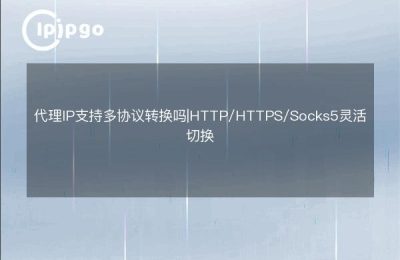
How to complete the IP proxy
In the modern Internet environment, IP proxy technology is widely used in a variety of scenarios, such as web crawling, data collection, and anonymous browsing. The process of accomplishing IP proxy is not complicated, but requires some basic knowledge and steps. This article will detail the specific methods and considerations for accomplishing IP proxy.
1. Understand the basic concepts of IP proxies
An IP proxy is an intermediate server that forwards a user's network request to a destination server, thus hiding the user's real IP address. Based on the type of proxy, IP proxies can be categorized into forward and reverse proxies. Forward proxies are mainly used for client-side access, while reverse proxies are used for server-side load balancing and security enhancement.
2. Choosing the right type of agent
Before you start setting up an IP proxy, you first need to determine the type of proxy you need:
- Positive Agents:Suitable for users who need to hide their real IP address, commonly used to visit websites or for data crawling.
- Reverse proxy:Ideal for organizations that need to manage multiple servers, commonly used for load balancing and security enhancements.
3. Obtain a proxy IP address
The first step in completing an IP proxy is to obtain an available proxy IP address. You can get it in the following ways:
- Purchase of agency services:Many providers offer stable proxy IP services and you can choose the right package according to your needs.
- Free Proxy List:There are many websites on the Internet that provide free proxy IP listings, but these IPs may be less stable and less secure.
- Build your own proxy server:If you have the technical skills, you can build your own proxy server and use a cloud server or VPS for this.
4. Configure proxy settings
After getting the proxy IP, you need to configure it next. Depending on the usage scenario, the configuration will be different:
Configuring the proxy in the browser
- Open your browser settings and find the Network or Proxy Settings option.
- Select Manually Configure Proxy and enter the proxy IP address and port number.
- Save the settings and restart the browser.
Configuring the Agent in the Operating System
In Windows or macOS, you can configure the proxy through the system settings:
- Windows:Go to "Settings" > "Network and Internet" > "Proxy" and manually enter the proxy IP and port.
- macOS:Go to "System Preferences" > "Network", select the current network, click "Advanced", and set the settings in the "Proxy" tab. settings in the "Proxy" tab.
Configuring the agent in the application
Many applications (e.g. data crawlers, download tools, etc.) support proxy settings. In the settings of the application, find the proxy option and enter the proxy IP and port.
5. Test that the agent is working properly
After completing the agent configuration, it is recommended that you perform a test to ensure that the agent is working properly. You can test it in the following ways:
- Visit the test ip's website to see if the IP address displayed is a proxy IP.
- Use a network speed test tool to check the speed and stability of the proxy.
6. Cautions
There are a few considerations to keep in mind when using an IP proxy:
- Privacy:Make sure you choose a trusted agency service to avoid disclosing personal information.
- Compliance with laws and regulations:When using an agent, follow the relevant laws and regulations to avoid illegal activities.
- Regular IP changes:Changing proxy IPs regularly can improve security and avoid being banned.
summarize
Completing an IP proxy is a simple process, but it requires careful selection of the right proxy type and service, and proper configuration. With the guidance in this article, you can easily implement an IP proxy to protect your network privacy while enjoying a more flexible network access experience.








